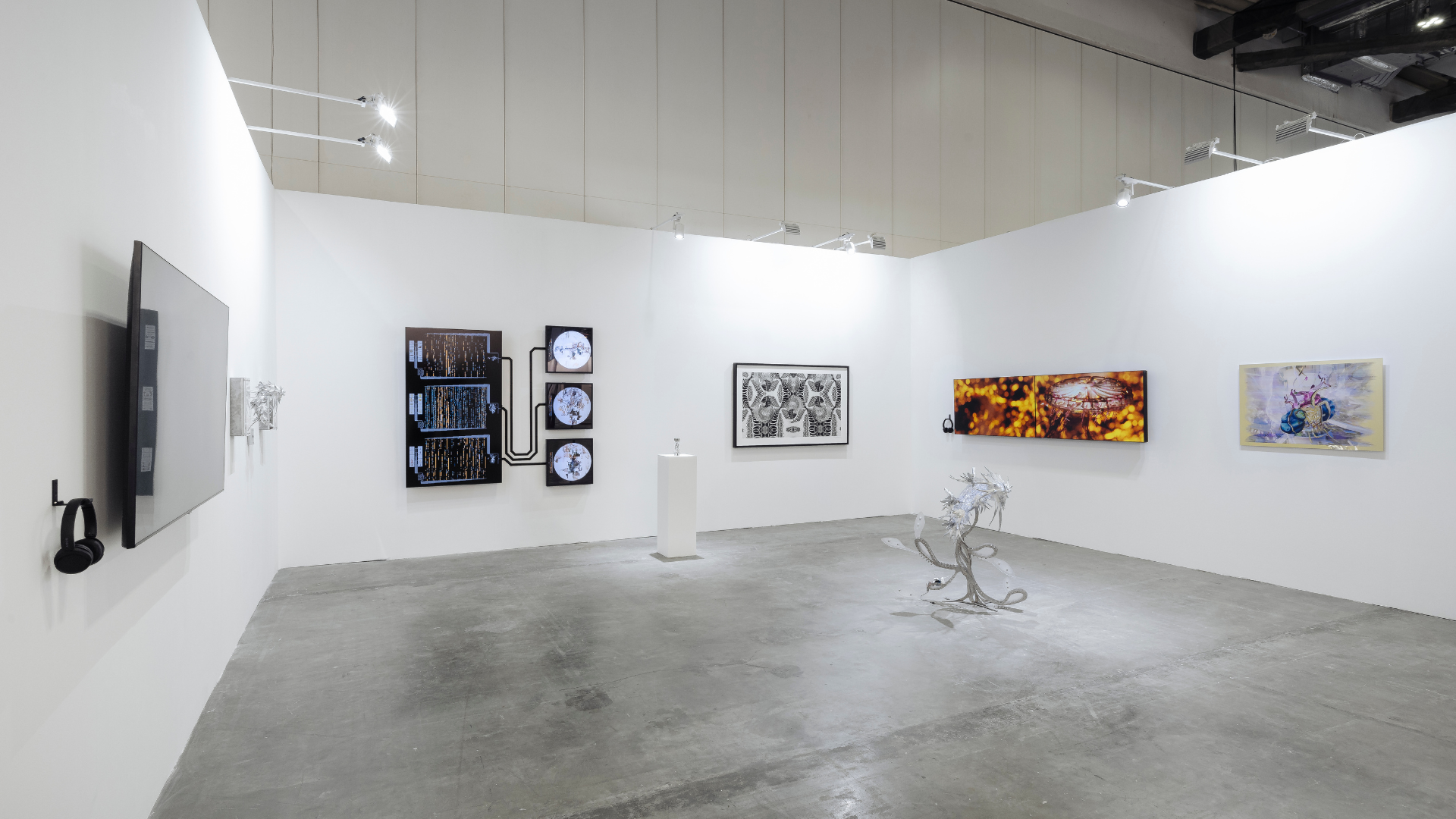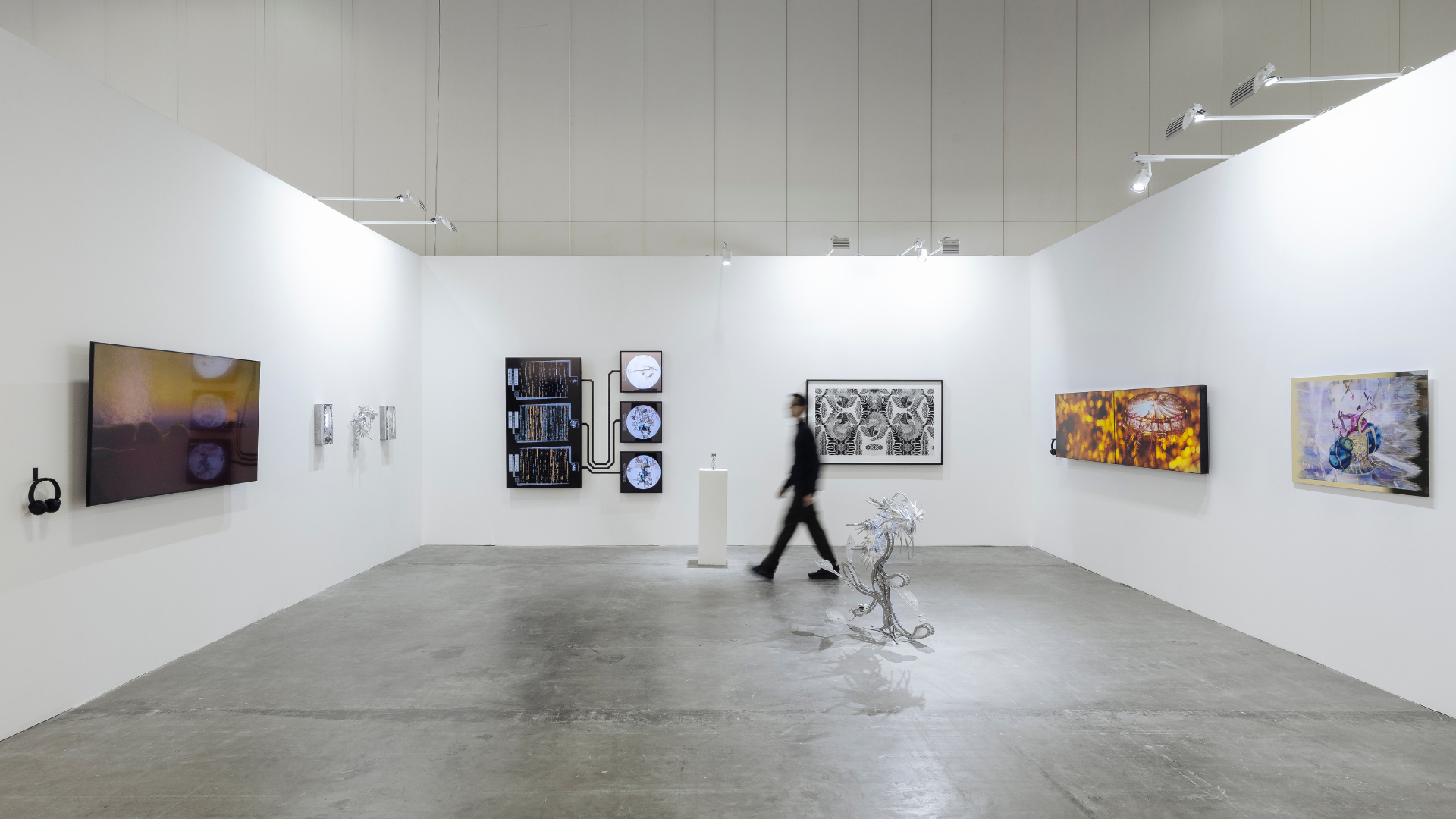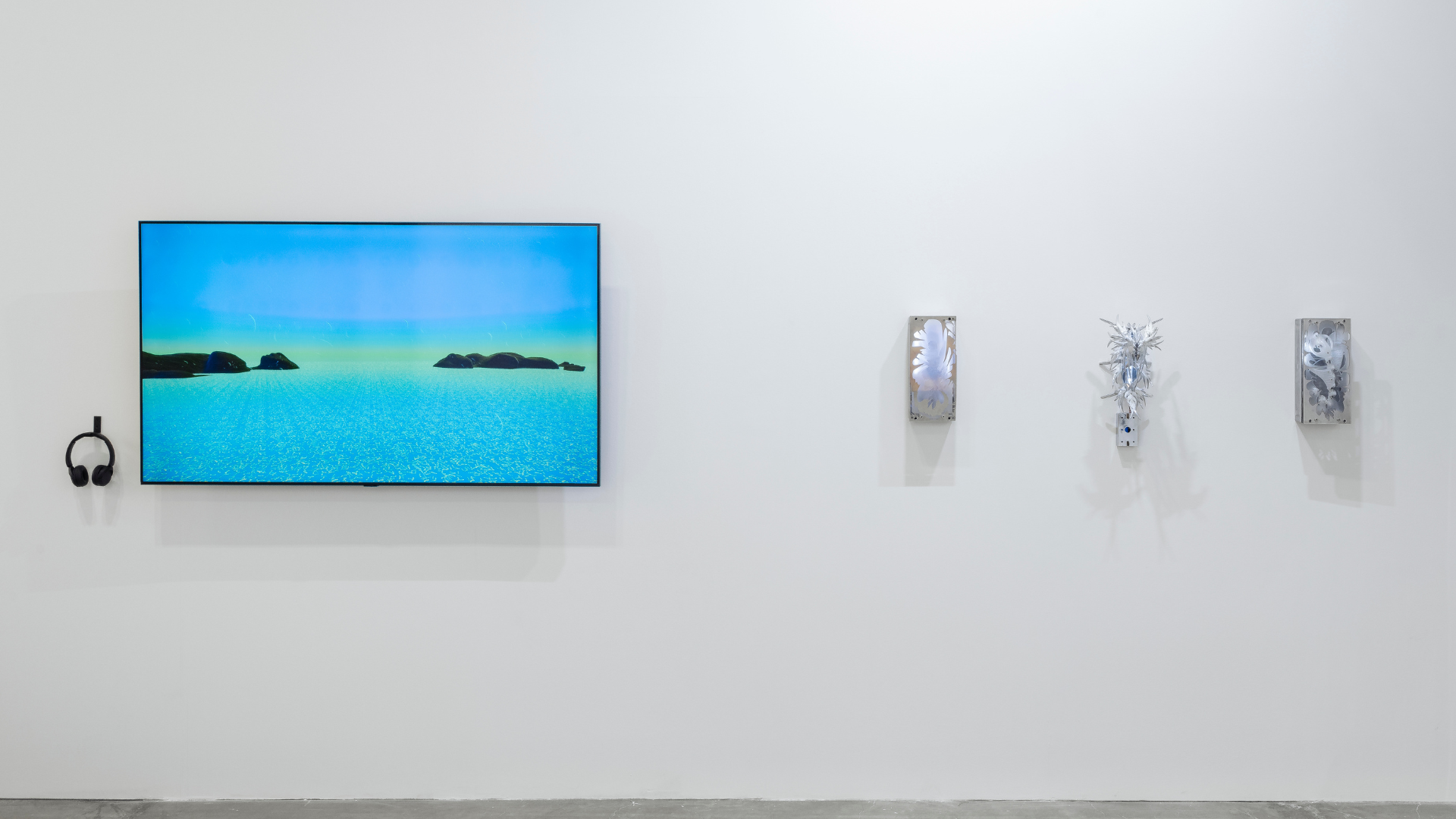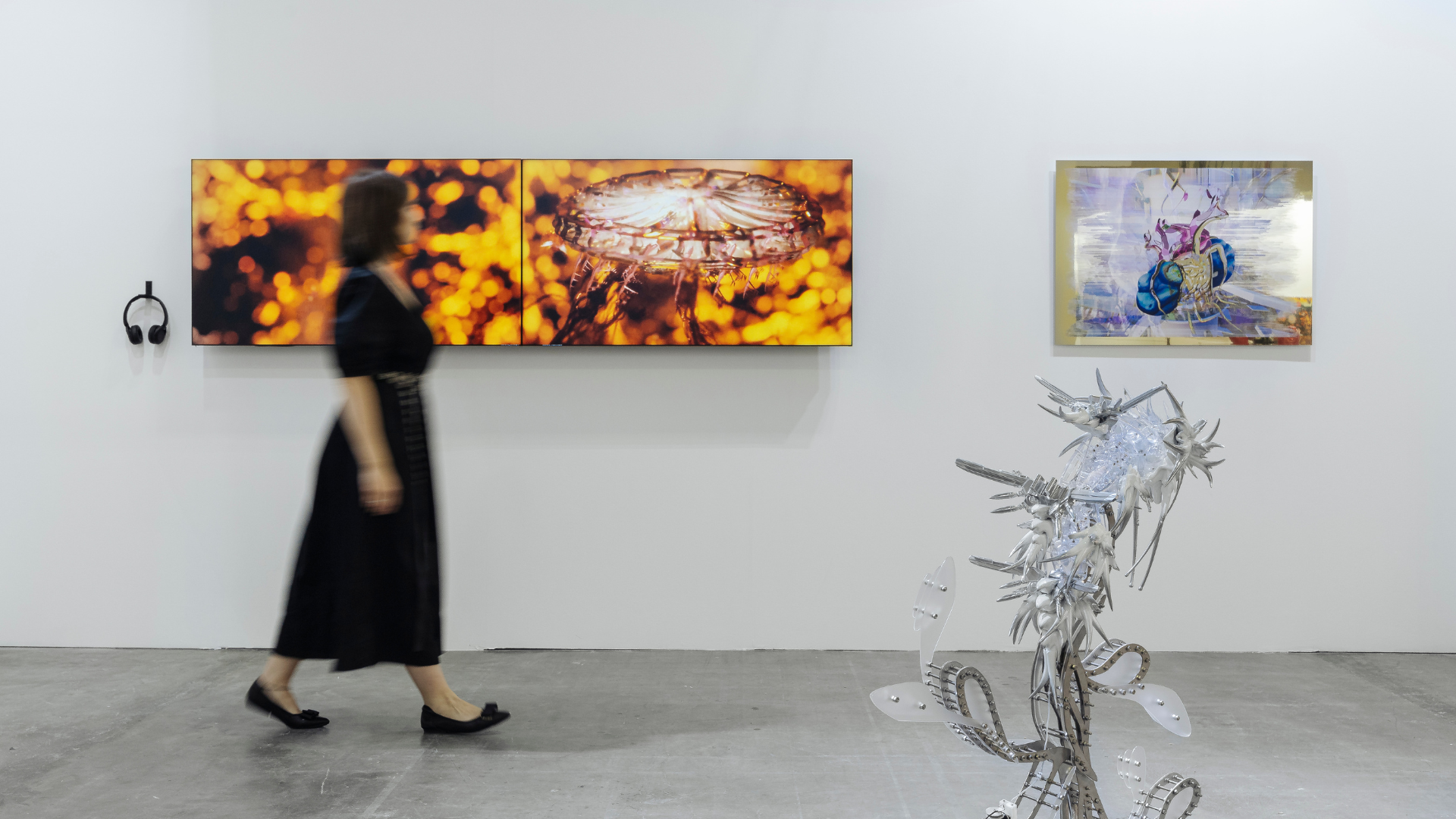For ART SG 2025, Gazelli Art House presents a group booth titled Unknown & Uncontained, featuring the work of six pioneering artists who explore the intersection of digital media, emerging technologies and organic lifeforms, including Entangled Others, Libby Heaney, William Latham, Xin Liu, Tamiko Thiel, and 00 Zhang. The theme centres on speculative communication between species and invites viewers to experience newly generated worlds through various mediums, including video, generative code, sculpture and prints. The presentation highlights how these artists map and recreate environments at vastly different scales, offering a poetic and immersive exploration of the unknown.
Matteo Zamagni's Horror Vacui will be shown for the first time in Singapore as part of ART SG FILM at ART SG 2025.
-
self-contained 009.4
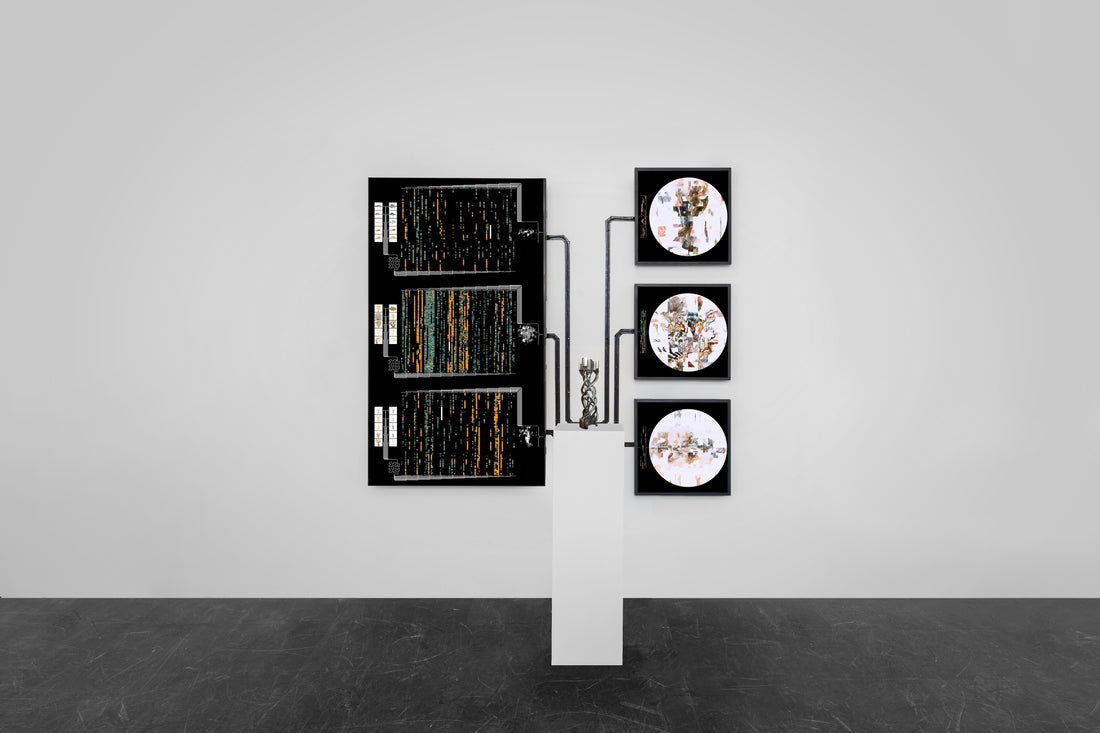 Vendor:self-contained 009.4Entangled Others
Vendor:self-contained 009.4Entangled Others
2024
Digital video (generative code, neural networks), synthesized DNA in metal capsule, sculptural capsule holder (stainless steel, 3D printed) and ERC-721 token
- Regular price
-
$30,000.00 - Regular price
-
- Sale price
-
$30,000.00
-
Ent-er the quantum cyborg
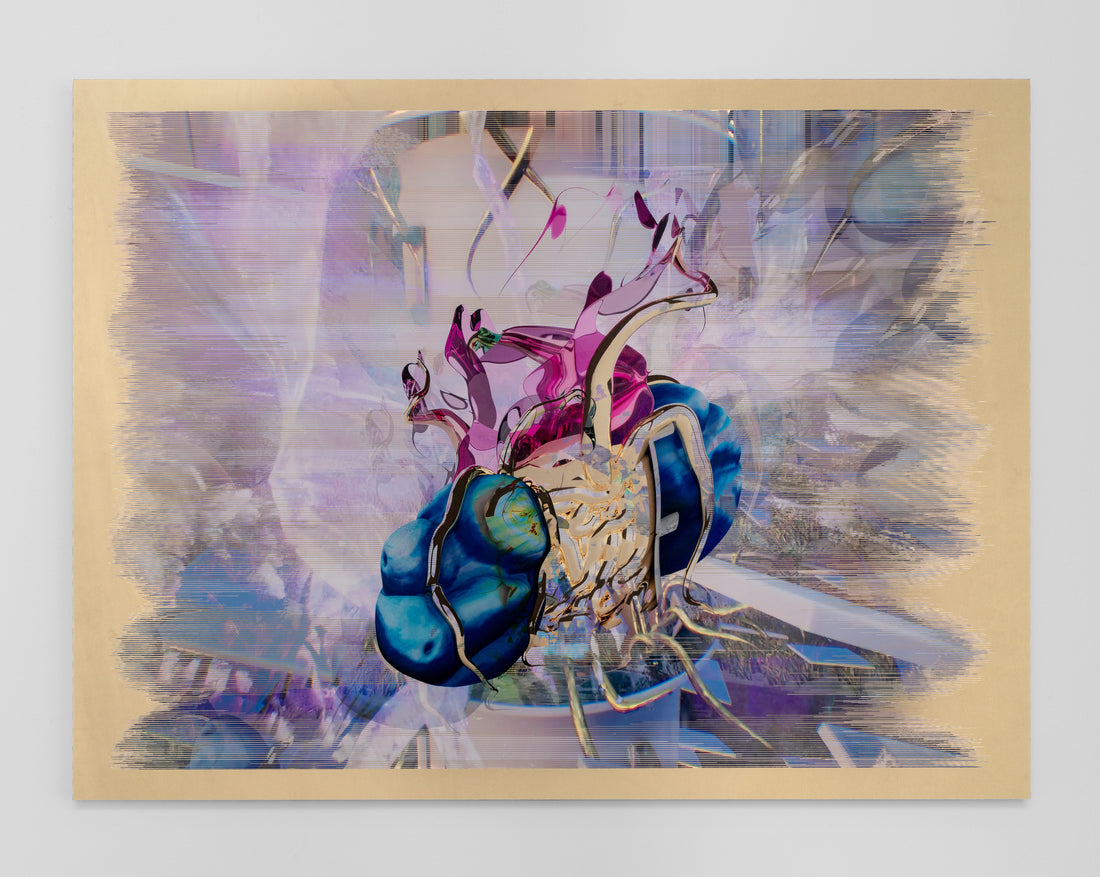 Vendor:Ent-er the quantum cyborgLibby Heaney
Vendor:Ent-er the quantum cyborgLibby Heaney
2024
Digital ink print on gold mirrored Dibond accompanied by an ERC-721 token
- Regular price
-
$8,500.00 - Regular price
-
- Sale price
-
$8,500.00
-
Recursive Infinity Mutator
 Vendor:Recursive Infinity MutatorWilliam Latham
Vendor:Recursive Infinity MutatorWilliam Latham
2022/2024
Giclée print on Hahnemuhle Photo Rag 305 gsm mounted to 5mm KAPA Mount™, accompanied by an original digital file and ERC-721 token
- Regular price
-
$19,000.00 - Regular price
-
- Sale price
-
$19,000.00
-
Dynamic Plumes Infinity Mutator
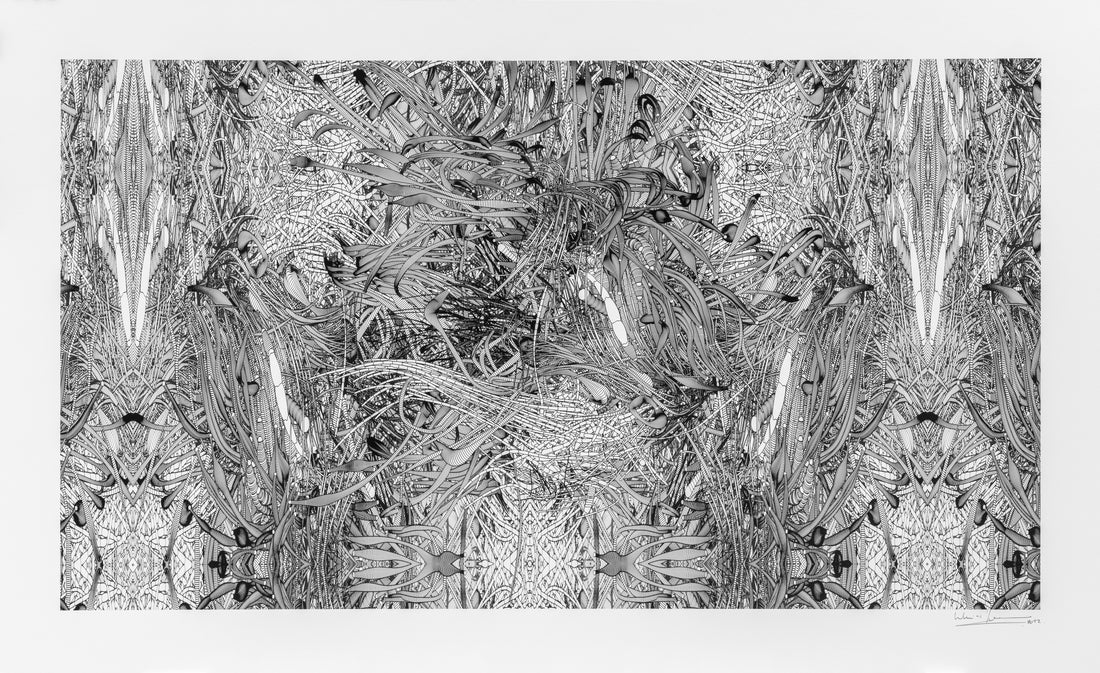 Vendor:Dynamic Plumes Infinity MutatorWilliam Latham
Vendor:Dynamic Plumes Infinity MutatorWilliam Latham
2022/2024
Giclée print on Hahnemuhle Photo Rag 305 gsm mounted to 5mm KAPA Mount™, accompanied by an original digital file and ERC-721 token
- Regular price
-
$19,000.00 - Regular price
-
- Sale price
-
$19,000.00
-
Lycorises Reverie
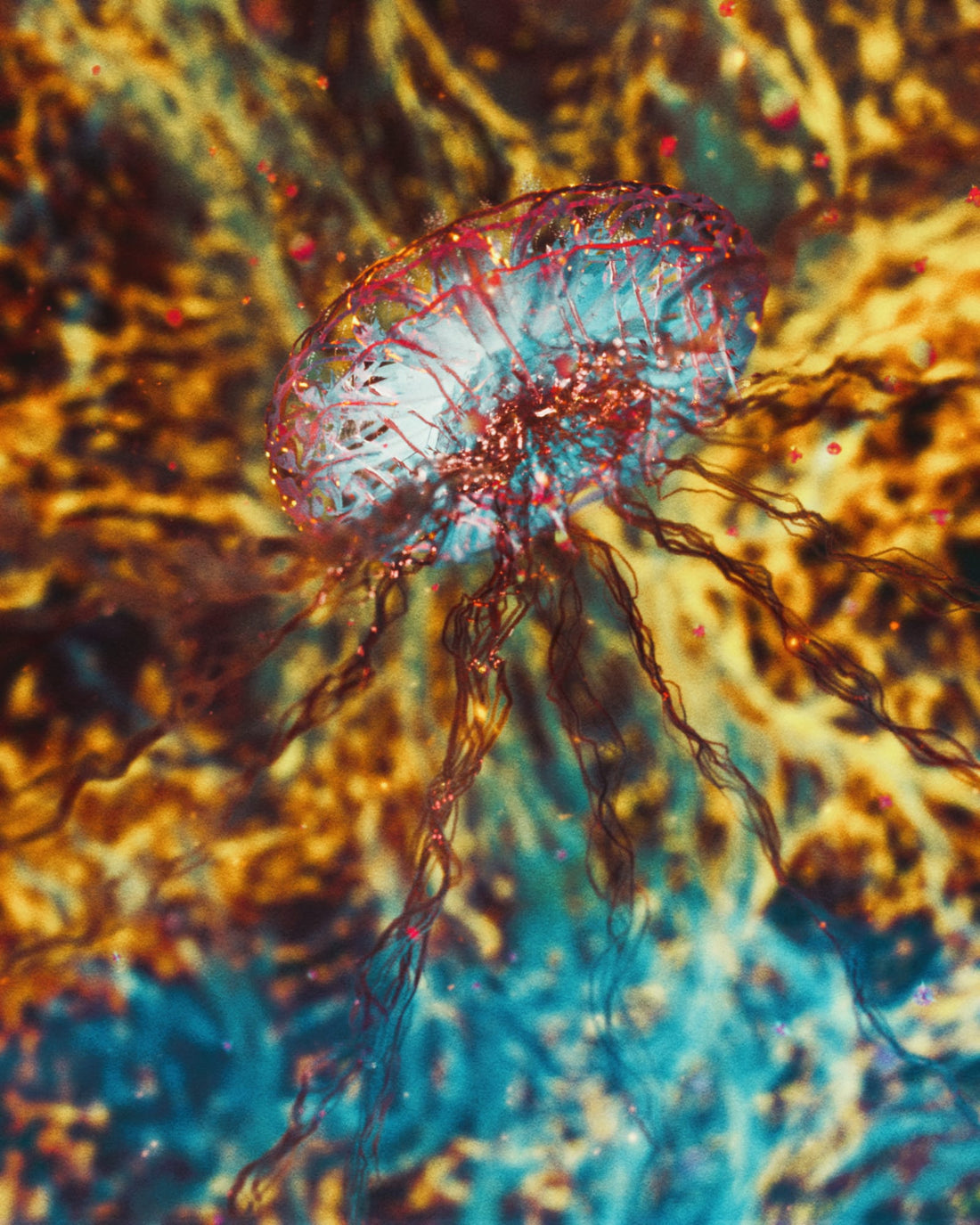 Vendor:Lycorises ReverieXin Liu and Nan Zhao
Vendor:Lycorises ReverieXin Liu and Nan Zhao
2023
Digital video, looped
- Regular price
-
$32,000.00 - Regular price
-
- Sale price
-
$32,000.00
-
Atmos Sphaerae
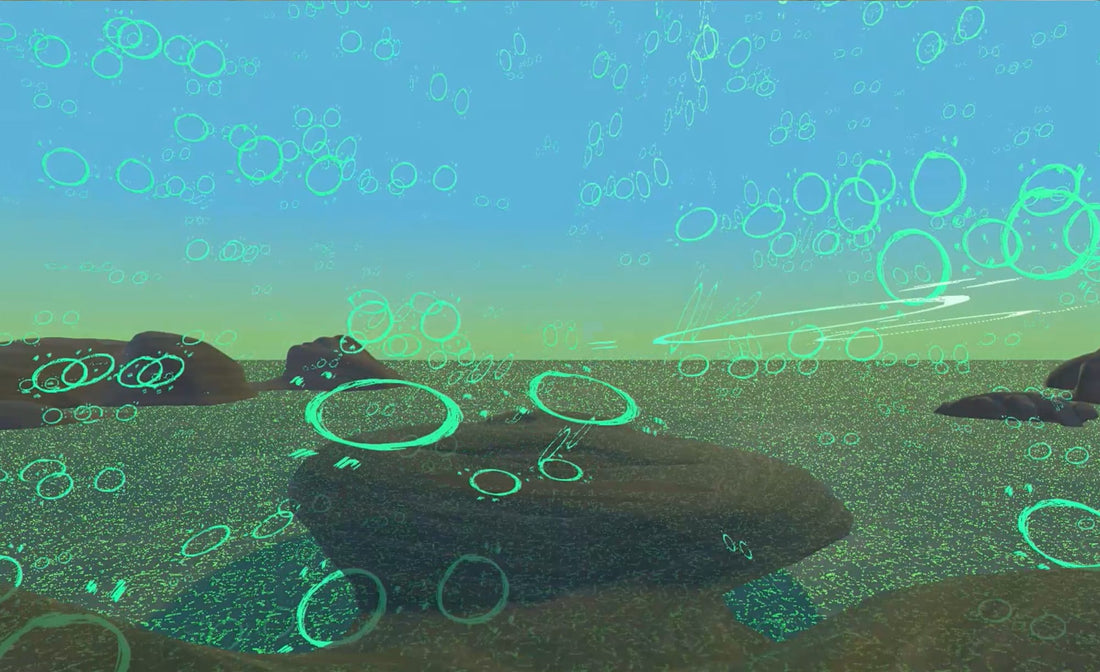 Vendor:Atmos SphaeraeTamiko Thiel
Vendor:Atmos SphaeraeTamiko Thiel
2021/2022
Digital Video
- Regular price
-
$6,000.00 - Regular price
-
- Sale price
-
$6,000.00
-
Atmos Sphaerae
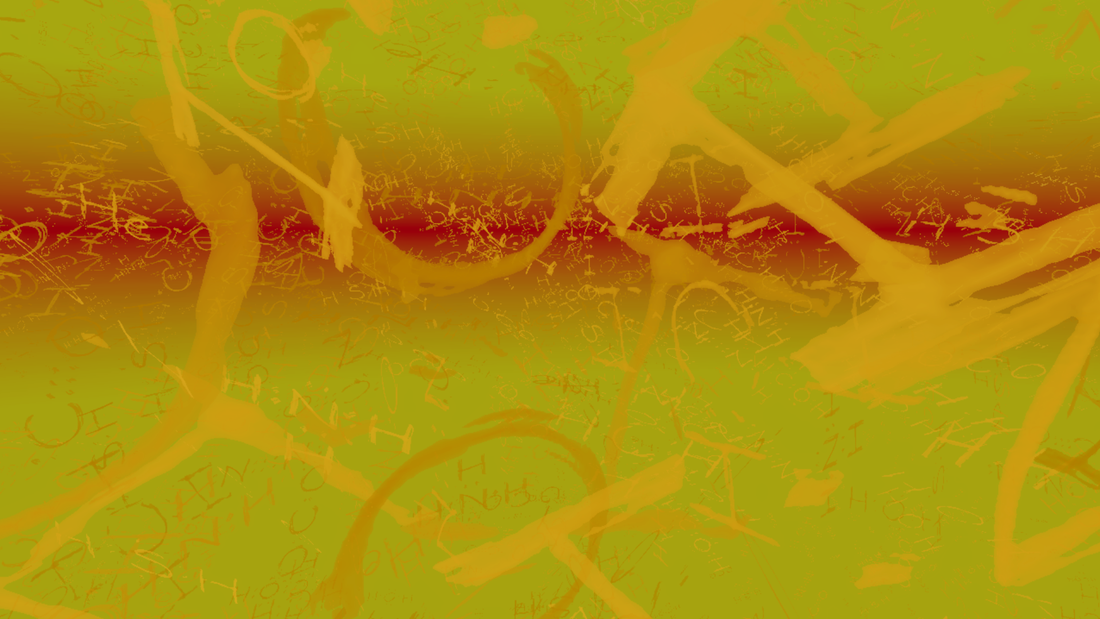 Vendor:Atmos SphaeraeTamiko Thiel
Vendor:Atmos SphaeraeTamiko Thiel
2021
Virtual Reality Oculus Link version for PC
- Regular price
-
$16,000.00 - Regular price
-
- Sale price
-
$16,000.00
-
Prototype0037 ISO-9660
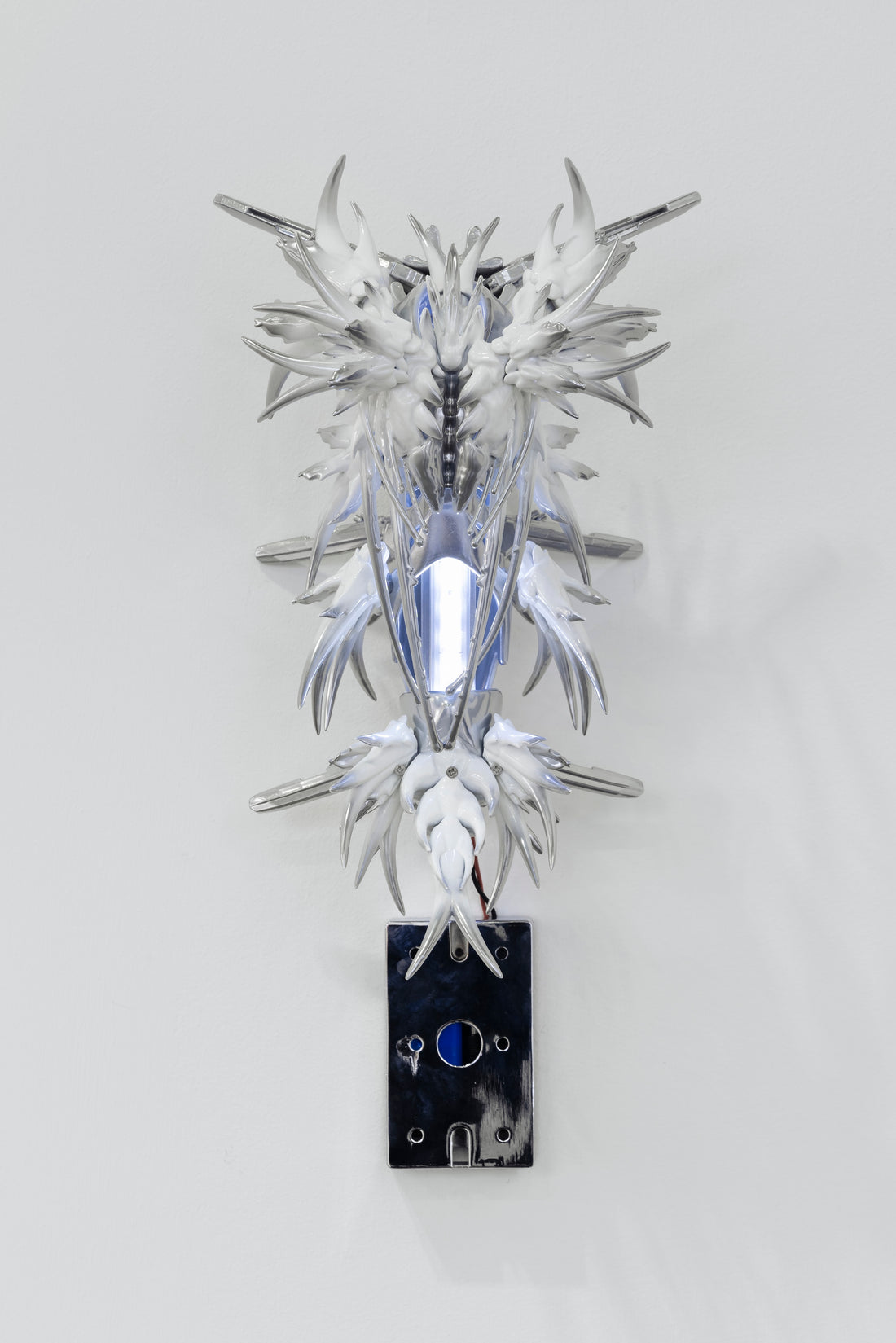 Vendor:Prototype0037 ISO-966000 Zhang
Vendor:Prototype0037 ISO-966000 Zhang
2025
Silver plated resin, translucent PLA, 304 stainless steel, 316 stainless steel, and integrated light systems
- Regular price
-
$5,000.00 - Regular price
-
- Sale price
-
$5,000.00
-
Prototype0037 RAID0
 Vendor:Prototype0037 RAID000 Zhang
Vendor:Prototype0037 RAID000 Zhang
2025
Silver plated resin, translucent PLA, 304 stainless steel, 316 stainless steel, terminal, servo, rubber tube and stainless steel stand
- Regular price
-
$15,000.00 - Regular price
-
- Sale price
-
$15,000.00
-
Prototype0037 DISK 2025.2.2
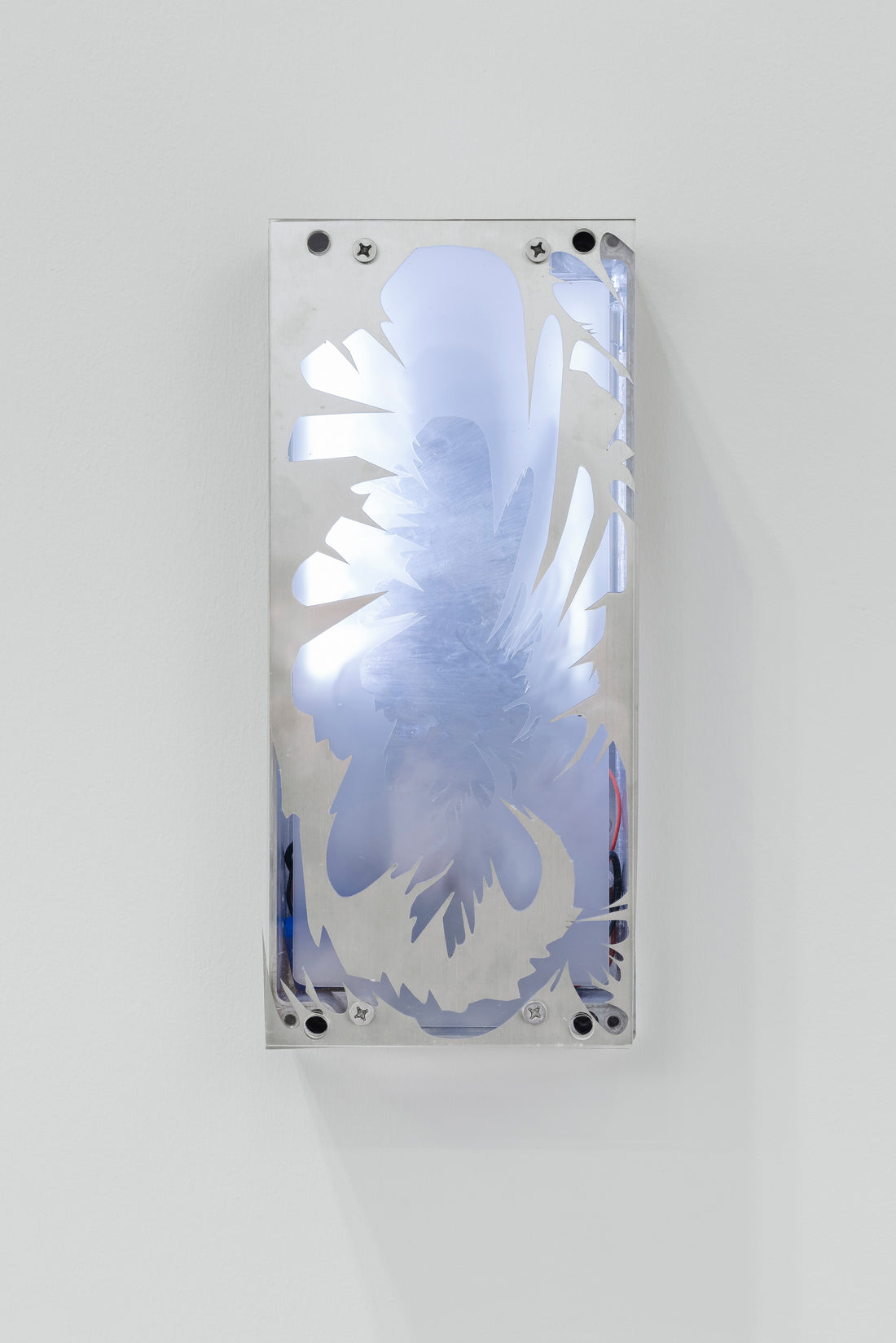 Vendor:Prototype0037 DISK 2025.2.200 Zhang
Vendor:Prototype0037 DISK 2025.2.200 Zhang
2025
304 stainless steel, 316 stainless steel, acrylic, perspex and integrated light systems in aluminium enclosure
- Regular price
-
$5,000.00 - Regular price
-
- Sale price
-
$5,000.00
-
Prototype0037 DISK 2025.2.1
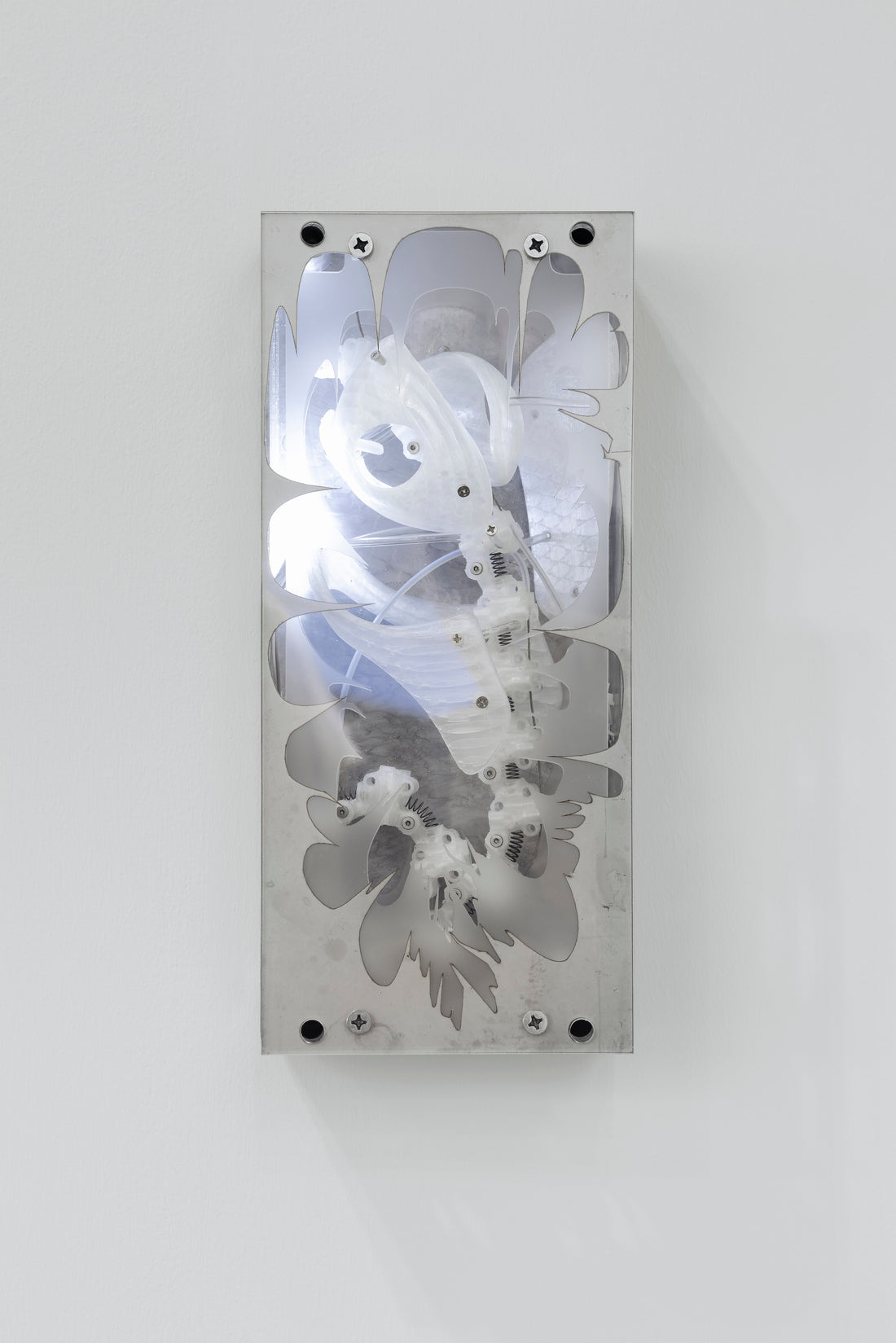 Vendor:Prototype0037 DISK 2025.2.100 Zhang
Vendor:Prototype0037 DISK 2025.2.100 Zhang
2025
304 stainless steel, 316 stainless steel, thermosetting polymer, perspex, and integrated light systems in aluminium enclosure
- Regular price
-
$5,000.00 - Regular price
-
- Sale price
-
$5,000.00
-
Horror Vacui
 Vendor:Horror VacuiMatteo Zamagni
Vendor:Horror VacuiMatteo Zamagni
2018
Digital mixed media short film
- Regular price
-
$12,000.00 - Regular price
-
- Sale price
-
$12,000.00
ART SG 2025
Installation Views
About the Artists
Entangled Others
Entangled Others (formed 2020) is the collaborative studio practice of artists Feileacan McCormick and Sofia Crespo. Their work focuses on ecology, artificial lifeforms and generative processes. Pursuing detailed research and biologically-inspired technologies they delve into the intricate web of relationships between the more-than-human world and its interaction with human technologies. Central to all their projects is the concept of entanglement—a complex state where no single entity exists in isolation, and every action, interaction, and expression resonates through a multitude of interconnected beings. Entangled Others have exhibited at numerous international venues, including Serralves Museum, Porto (2024–2025); Beijing Times Art Museum, Beijing (2024); Mies Van der Rohe pavilion, Barcelona for Sònar Festival 2024; The Photographer’s Gallery, London (2023); Nxt Museum, Amsterdam (2023) and UNESCO HQ, Paris (2022). In Autumn 2024 their work Sediment Nodes (2022–2023) featured as a Special Display during the Victoria & Albert Museum’s Digital Art Season, London. Their work is in the permanent collection of the Buffalo AKG Museum, New York; the Onassis Foundation, Vaduz; and the Colección SOLO, Madrid.
Libby Heaney
Dr. Libby Heaney is an award winning artist with a professional background in Quantum Science. She is the first artist to work with quantum computing as a functioning artistic medium. Heaney’s practice explores quantum concepts and temporalities, combining diverse media such as moving image, glass and watercolour painting with cutting-edge technologies. In doing so she seeks to entangle interior landscapes with the impact of the exterior realm. Heaney’s work explores philosophical questions about the nature of reality while remaining intimate and embodied. Recent solo exhibitions include Quantum Soup, HEK, Basel (2024); Heartbreak and Magic, Somerset House, London (2024) and Ent-, LAS Art Foundation, Berlin (2022). In September 2024 she unveiled her debut public sculpture, Ent- (non-earthly delights), as part of Frieze Sculpture 2024. In 2022 Heaney’s project Ent- won the Lumen Prize and the Falling Walls Art-Science Prize. Heaney has been the recipient of numerous Arts Council England grants and her work is in major private collections including the Zabludowicz Collection and 0xCollection. She holds a PhD in Quantum Information Science and worked as a post-doctoral researcher in quantum science at the University of Oxford and the National University of Singapore.
William Latham
William Latham (b. 1961) is an artist whose pioneering work in computer-generated algorithmic art transformed the boundaries of digital creativity. While a Research Fellow at IBM in the late 1980s and early 1990s, Latham collaborated with mathematician and programmer Stephen Todd to develop the Mutator Evolutionary Art software, a landmark in the ‘artificial life’ branch of AI. Applying evolutionary processes to artmaking originated from Latham’s time as Henry Moore Scholar at the Royal College of Art in the early 1980s, during which he created his FormSynth drawings and etchings. From the mid-1990s Latham pursued projects in the Rave Music scene and developed video game projects, before in 2007 becoming Professor in Computer Art at Goldsmiths University, London. Here he restarted his collaboration with Stephen Todd, and together they resurrected and extended their old Mutator code and pushed the technology into VR, creating immersive experiences which have toured internationally. Most recently Latham has been developing a series of Infinity Mirror monochrome prints which could be described as ‘computer gothic’. Latham’s work is in the permanent collections of The Pompidou Centre, Paris; the Victoria & Albert Museum, London; The Gulbenkian Foundation, London, and The Henry Moore Institute, Leeds. Latham is the curator of the Creative Machine series of group exhibitions, with the most recent iteration opening at Taikang Museum Beijing in November 2024.
Xin Liu
Xin Liu (b. 1991) is an artist and engineer currently based between London and New York. Working across sculpture, digital art, and film Xin’s work considers the personal implications of our increasing technological advancements. She received an MFA from the Rhode Island School of Design in 2015 and an MS from MIT Media Lab in 2017. Xin is an artist-in-residence at SETI Institute, an advisor for LACMA Art+Tech Lab, a researcher at Antikythera, Berggren Institute, the founding Arts Curator in the Space Exploration Initiative at MIT Media Lab, and the Visiting Fellow at Cornell Tech (2024–25). Xin is the 2024 recipient of the K11 Artist Prize and has been selected as part of the 2025 Artsy Vanguard. Her first US institutional solo exhibition, Seedlings and Offsprings was held at Pioneer Works, New York in 2023. Notable recent exhibitions include those at Hammer Museum, Los Angeles; Benton Museum of Art at Pomona College, California; and Sapporo International Arts Festival, Japan (all 2024). Xin’s work is included in collections such as M+ Museum, Hong Kong; KADIST Foundation, France; Ars Electronica, Austria, and X Museum, China. Xin is the recipient of numerous awards and residencies, including Porche’s Chinese Young Artist of the Year 2021, Forbes 30 under 30 Asia, the Van Lier Fellowship, and the SXSW Interactive Innovation Award.
Tamiko Thiel
Tamiko Thiel (b. 1957) explores the interplay of place, space, the body and cultural memory through her politically-engaged artworks. An internationally respected pioneer in the realms of digital art and augmented realities, Thiel’s installations endeavour to visualise webs of meaning and reconfigure the viewer's physical experience of space. Studying at Stanford University in the early 1980s, Thiel went on to receive an MS in Mechanical Engineering from MIT in 1983. Her work has been exhibited internationally, including notable exhibitions at MoMA New York; the International Center for Photography, New York; Pinakothek der Moderne, Munich; ICA, London; Tokyo Metropolitan Museum of Photography, Tokyo, and the Centre Pompidou, Paris. In 2018 she received the SAT Montreal iX Visionary Pioneer Award, and in 2022 she was the subject of a major retrospective at the Kunstverein Wolfsburg in Germany. In 2024 CAI (Contemporary Art Issue) Magazine ranked her in the top 10 most famous digital artists in the world; she was part of the inaugural cohort inducted into the new AWE XR Hall of Fame; and SIGGRAPH, the world’s premiere organisation for research and development of computer graphics in industry, academia and the arts, honoured Thiel with the Distinguished Artist Lifetime Achievement for Digital Art.
00 Zhang
00 Zhang (b. 1996) is a Chinese-born London-based emerging artist who is gaining a reputation with her innovative explorations of a sensibility she terms ‘a double-sided exile’ – entwined feelings of dislocation and connection. Thematically her practice investigates the potential of a new form of collective imagination to transcend the borders of national identity, gender, and religion. Her multifaceted practice which includes numerous collaborators, spans sculpture, installation, CGI animation, and interactive digital game environments. Zhang blends embodiment with complex cybernetic concepts, depicting the integration of agents and their environments through elaborate narratives. Exploring the integration of the real world and the virtual, Zhang constructs imaginary worlds that occupy real space – immersive environments that engage viewers and transport them between corporeality and the virtual realm. Zhang currently has newly commissioned work in the exhibition X Virtual Gathering: Honey at X Museum, Beijing (2024). Zhang graduated in 2020 from Central Saint Martins, London, and has exhibited at SPLIT, London (2024); Zabludowicz Collection, London (2023); GIANT, Bournemouth (2023); Broadway Gallery, Nottingham (2022); 789 Nanjing West Road, Shanghai (2022); Thetis S.p.A. Castello, Venice (2022), and Shanghai Coutts Art Center, Shanghai (2021).
Matteo Zamagni
Matteo Zamagni's (b. 1992) practice encompasses visual arts, multimedia installations, film production, and electronic music. Combining these unique yet interlinked contemporary technologies with oracular themes, Zamagni reflects on the environmental, economic, and social turbulence of today.
Zamagni’s practice offers a holistic commentary on the correlations between disaster capitalism and the Earth's ecosystems. Using analytical geoscientific tools, VR/AR/MR, real-time generative imaging, world-building, photogrammetry, physics simulations, and CGI techniques, his artworks simulate and combine elemental natural forms with immersive media. This has included procedurally generated fractals, local reconstructions of existing terrain via LiDAR point clouds, and macro-scale aerial views of the earth. The resulting works are often stacked composites of recurring patterns in tangible and notional structures, depicting a complex continuum of local-global phenomena (from densely overpopulated spaces to climatological models).
Zamagni creates accessible, interactive entry-points for participants, who in turn, embody the artist's exploration of the entanglements of critical-gaze, agency, human-machine perception, tracking the evolution of post-anthropocentric consciousness fostered by an entangled technosphere and biosphere. His music production project, Seven Orbits, provides a further platform for playful experimentation with audio-visual experiences. Immersive audio-visual live sets and a recent EP released with the Shanghai-based SVBKVLT label make use of a broad palette of post-club stimuli that play with and confound audience perception. An experimental form of experience-hacking and inducing altered states that reflect the vertigo of Zamagni’s machine-vision driven visual art.














